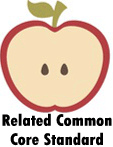Visual Elements Contribution to a Story Worksheets
Related ELA Standard: RL.5.7

The old cliché, "A picture is worth a thousand words.", still holds a lot of weight today when it comes to storytelling. Authors will often include pictures, drawings, and even cartoons when they are putting together fictional written works. These elements help the reader get a clear picture of what the characters and scenes are like. Publishers for years have realized that diagrams and graphic organizers help keep their readers engaged. These worksheets will help students understand how drawing and visuals in general help writers communicate their thoughts.
Visual Elements Worksheets To Print:
Balloons – See if
the image changes your thoughts on the poem.
Freddy Frog – This
is somewhat of a comic book started.
Cats – The poem tells
us that cats are a lot of things.
The End of an Era
– We work to identify hyperboles and metaphors in the story about
grandpa.
My House
– My house is in a great neighborhood. It is just a short walk from
school and the playground.
Lost and Found
– Patrick looked around frantically. Where was his father? They
had been walking along together, and the next moment his father was
gone.
Market
Mix Up! – The newspaper article paragraphs below have all gotten
mixed up.
7 Steps
to Being a Ninja – After each story, answer the questions about
how the illustrations contribute to the tone of the article.
Yesterday
– Read the poem alongside each image. Write a few lines to describe
the meaning and tone of the poem as you consider it in context with
each picture.
Moping
– What is going on in the poem?
How to Use Visual Elements to Contribute to a Story?
The English literature has a large number of stories of varying genres and by various writers to offer to the readers. There are stories of different lengths and themes with different aspects of history being explored and ethics being taught to the readers. Despite the presence of such an enormous number of stories in the English language, more and more writers are coming up with their own well written stories addressing issues and themes relevant to contemporary times.
As a writer of a story, one always tries to make it as interesting as he or she possibly can so that the readers are attracted towards the work. One of the most underrated and least explored elements to be included in the story to make it interesting are visual images that are not often found in story books. Here are some of the visual elements you can use in the stories for various purposes:
Maps
There are a few well-known books in English history that start with a map. A map is a great tool to add to the stories that have the references to some geographical elements in the text. These maps can either be of the real world place or of a fictional world depending on the story, but are always useful for the readers in understanding the story.
Character Sketches
One of the most common confusion of the readers while they are reading a story is their inability to make up a picture of the characters in their mind. This can make the story feel vague and difficult to understand. It is better to introduce a character with a visual representation of what he or she looks like in the form of a rough sketch for the readers to feel acquainted with the character while reading.

